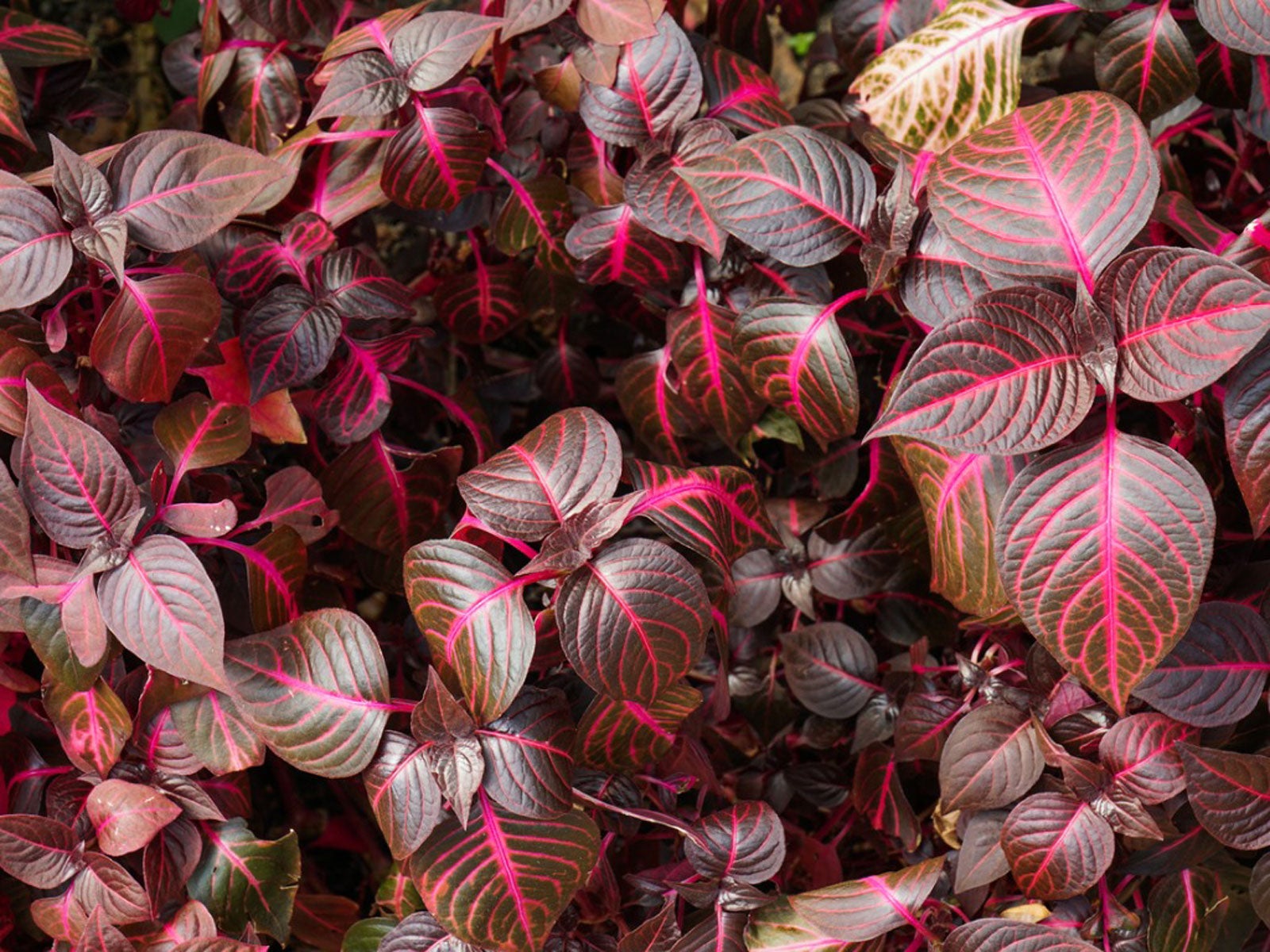Bloodleaf Plant Care: How To Grow An Iresine Bloodleaf Plant


For glossy, bright red foliage, you can't beat the Iresine bloodleaf plant. Unless you live in a frost-free climate, you'll have to grow this tender perennial as an annual or bring it indoors at the end of the season. It also makes a lovely houseplant.
Iresine Plant Info
Bloodleaf (Iresine herbstii) is also called chicken-gizzard, beefsteak plant, or Formosa bloodleaf. Iresine bloodleaf plants are native to Brazil where they thrive in warm temperatures and bright sunlight. In their native environment, the plants reach heights of up to 5 feet (1.5 m.) with a spread of 3 feet (91 cm.), but when grown as annuals or potted plants they only grow 12 to 18 inches (31-46 cm.) tall. The red leaves are often variegated with green and white markings and add contrast to beds and borders. They occasionally produce small, greenish white flowers, but they are not ornamental, and most growers simply pinch them off. Here are two exceptional cultivars to watch for:
- ‘Brilliantissima' has bright red leaves with pink veins.
- ‘Aureoreticulata' has green leaves with yellow veins.
Growing Bloodleaf Plants
Bloodleaf plants enjoy high heat and humidity and you can grow them outdoors year-round in USDA plant hardiness zones 10 and 11. Plant in a location with full sun or partial shade and organically rich soil that drains freely. Growing bloodleaf in full sun results in better color. Amend the bed with compost or aged manure before planting, unless your soil is exceptionally high in organic matter. Set out the plants in spring after all danger of frost has passed and the soil stays warm both day and night. Keep the soil evenly moist all summer by watering deeply every week in the absence of rain. Use a 2 to 3 inch (5-8 cm.) layer of organic mulch to help prevent the moisture from evaporating. Reduce the moisture in fall and winter if you are growing bloodleaf plants as perennials. Pinch out the growth tips while the plants are young to promote a dense growth habit and attractive shape. You might also consider pinching off flower buds. The flowers aren't particularly attractive, and supporting flowers depletes energy that would otherwise go toward growing dense foliage. Plants grown in less than ideal conditions rarely flower.
Indoor Care of Bloodleaf Plants
Whether you are growing bloodleaf as a houseplant or bringing it indoors for winter, pot it up in a loamy, soil-based potting mixture. Place the plant near a bright, preferably south-facing window. If it becomes leggy, then it probably isn't getting enough light. Keep the potting mix moist in spring and summer by watering when the soil feels dry at a depth of about an inch (2.5 cm.). Add water until it runs from the drainage holes in the bottom of the pot. About 20 minutes after watering, empty the saucer under the pot so the roots aren't left sitting in water. Bloodleaf plants need less water in fall and winter, but you should never allow the soil to dry out.
Sign up for the Gardening Know How newsletter today and receive a free copy of our e-book "How to Grow Delicious Tomatoes".

Jackie Carroll has written over 500 articles for Gardening Know How on a wide range of topics.